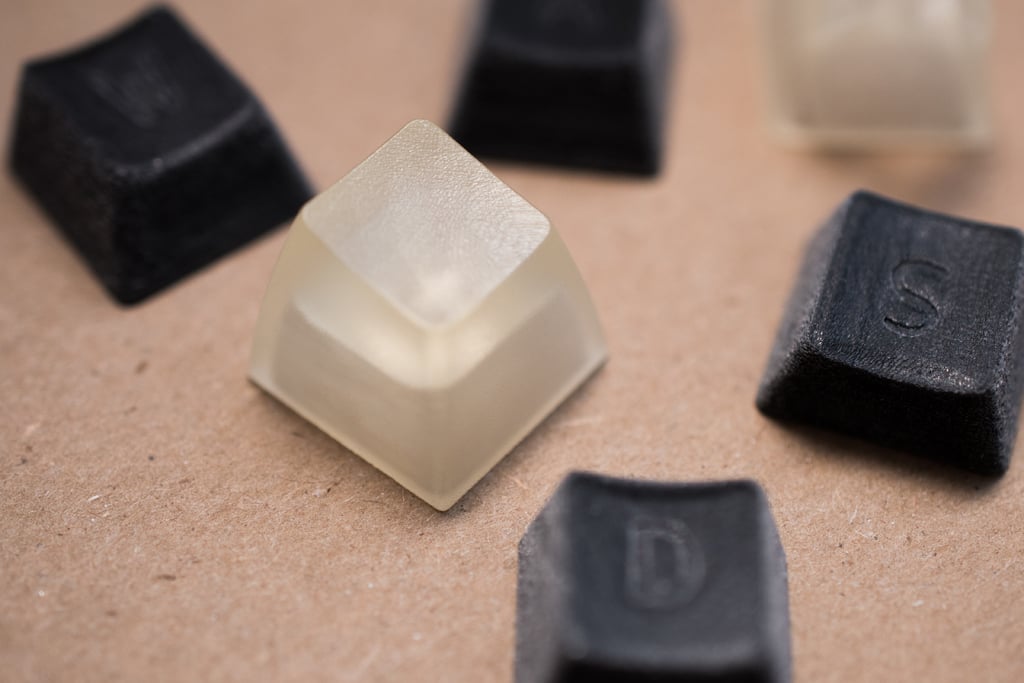High Quality Keycap Printed at a 45 Degree Angle
High Quality Keycap Printed at a 45 Degree Angle
Print Profile(2)


Description
My new keyboard came without keycaps so I decided to make some. Through a lot of trial and error, I learned how to create some nice keycaps - and that's what this model does. You can learn more about how I arrived at this point and some alternative approaches that may work better for your specific needs and objectives at https://candrews.integralblue.com/2024/03/3d-printing-high-quality-keycaps/
The 45-degree rotated orientation is harder to print (as there's only a tiny bit of the keycap touching the built plate), requires support (it produces waste and the support can be annoying to remove), and requires a lot more filament changes to print colored legends. So why use this orientation?
The 45-degree angle orientation produces a much higher quality keycap top surface. With this orientation, the concave keycap top is smooth without visible (well, only visible with a bright light and very close look) or feelable layer lines, especially when using a 0.2mm nozzle. For the best, highest-quality printed keycaps, this orientation is the way to go.
Adhesion is the biggest challenge, so any tricks to improve adhesion should be applied, including:
- Using a brim
- Reducing the brim-object gap
- Slowing speeds
- Increasing the initial layer height
The orientation is critical. The stem must have a solid part on the bottom. In other words, the slit that goes through the stem must be horizontal. Otherwise, there will be nothing for the support to hold, and the stem will fail to print likely resulting in spaghetti.
The keycap model was generated using OpenSCAD and KeyV2 using this code:
include <./includes.scad>
$stem_inner_slop = 0.0;
$cherry_bevel = false;
bar_support() rounded_cherry() row_profile("mt3") no_stem_support() rotate([0,45,0]) {
key(true);
}
You can now produce custom keycaps that look and feel great! Besides artisans, it's very much doable to produce an entire keyboard in a unique color for a very personalized look.












